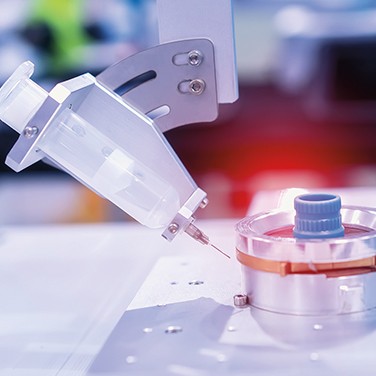New Glue Harnesses Plant Power
By Mike Howie
In a collaborative effort, researchers from four universities across the globe have created a new, stronger, and more sustainable type of glue. They produced the glue by mixing plant-derived cellulose nanocrystals (CNCs) — which can be sourced from residual biomass from the agro-industry or recycled paper — with water.
Stronger than the Competition
Along its principle plane, a single drop of the glue can hold up to 90kg of weight — nearly 200 pounds. But the glue is designed to be about 70 times weaker perpendicular to that plane. This means that the glue can not only support the full weight of an adult but also be removed with the touch of a finger. Basically, it behaves more like common peel-and-stick adhesives than superglue, magnifying the benefits of each.
“The truly exciting aspect of this is that although our new adhesive can be sourced directly from residual biomass,” said Dr. Blaise Tardy of Aalto University in Finland, “it outperforms currently available commercial synthetic products by a great many measures.” Holding so much weight with so little glue is huge, he explained, especially from a natural plant-based solution.
Similar high-strength glues are often expensive and complex to manufacture, but that’s not the case with the plant-based glue. The bio-based particles used as a main ingredient can be acquired for a comparatively negligible cost, and the production process only requires adding water and allowing the mixture to cure. The curing phase is linked with the time it takes for the water to evaporate, which is currently about two hours. But this can be controlled and possibly reduced by using heat to speed evaporation.
"Our new adhesive can be sourced directly from residual biomass," said Dr. Blaise Tardy.
The new glue could pave the way for other more sustainable glues and for glues used in a variety of applications. For example, it could be used to protect fragile, high-value components in microelectronics that may undergo sudden physical shock. With such easy removal, the new glue could also make structural and decorative items more reusable. And, importantly, it could be used for new packaging applications. As Dr. Tardy said, “good, green packaging with bad glue still renders the packaging bad.”
Safer than the Alternatives
Many other glues, especially the high-strength varieties, can be hazardous to the environment, toxic to humans, and flammable. Some contain hazardous solvents like toluene and naphthas. Others contain n-hexane, which can cause peripheral neuropathy. While some glue ingredients may only cause skin irritation or allergies, others, like diglycidyl ethers, are suspected carcinogens. And, of course, glue vapors can cause a variety of effects, including headaches, loss of appetite, and low blood pressure. Even some common household glues give off fumes strong enough to be misused for a high. This new glue aims, in part, to reduce those dangers.
Along with researchers from Aalto University, the team included members from the University of Tokyo, Sichuan University, and the University of British Columbia.
Aalto professor Orlando Rojas added that “reaching a deep understanding on how the cellulose nanoparticles, mixed with water, form such an outstanding adhesive is a result of the work between myself, Dr. Tardy, Luiz Greca, Professor Hirotaka Ejima, Dr. Joseph J. Richardson, and Professor Junling Guo and it highlights the fantastic collaboration and integration of knowledge toward the development of an extremely appealing, low-cost, and safe application.”



